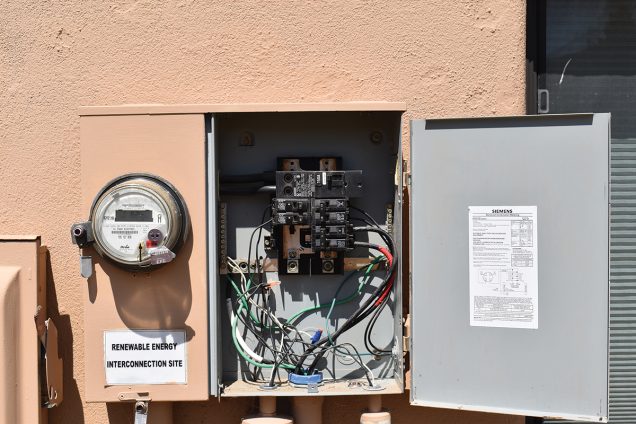The service panel is the central distribution point that connects the service wire or service drop—the main wire coming from the outside into the house—to the exit wires that split off and service different parts of the house.
It receives the incoming power from the utility company and distributes it to each of the circuits that supply the various lights, outlets, appliances, and other devices throughout the house.
Where to Find the Electrical Service Panel
The home electrical panel is generally kept away from the main household activities. These locations may include the garage, hallway leading to the garage, basement, and closet.
You can find your electrical service panel by locating the service drop and service head on your roof. Usually, the service panel should be directly below, one of the home’s stories. If the power lines are buried, the line will usually start on the street and connect to the home from the front or side of the house.
Types of Electrical Panels
- Main Breaker Panel:
The main breaker panel controls the electricity that reaches the different rooms of your house. It can be used to cut the power to your house including the circuit breaker. They are classified based on the number of circuits they can handle and their amperage.
- Fuse Boxes:
These are designed to prevent circuit overload. Fuse boxes consist of small fuses that can fit into an electrical panel. The fuse will short out when there is an excess flow of current.
- Main Lug Panel:
Main lug panels use lugs and the line wires run into these lugs. They feature the main breaker as the separate disconnect at the meter. You can connect the main lug panel to the breaker at the main panel where the main lug panel operates as a sub-panel.
- Sub Panel:
These are perfect for homes where you require multiple circuits in the same area. The sub-panels get their power from the main panel through a circuit. They don’t have dedicated disconnects and they allow you to adjust the current distribution throughout the house.
- Transfer Switches:
These are suited for circuits where a backup power generator is used. It works by transferring the generator power to the electrical power through the panel. There are two types of transfer switches – manual and automatic.
For more information or assistance during normal business hours, call or e-mail TPS at the phone number above. You can also complete and submit our Service Project Inquiry form.

